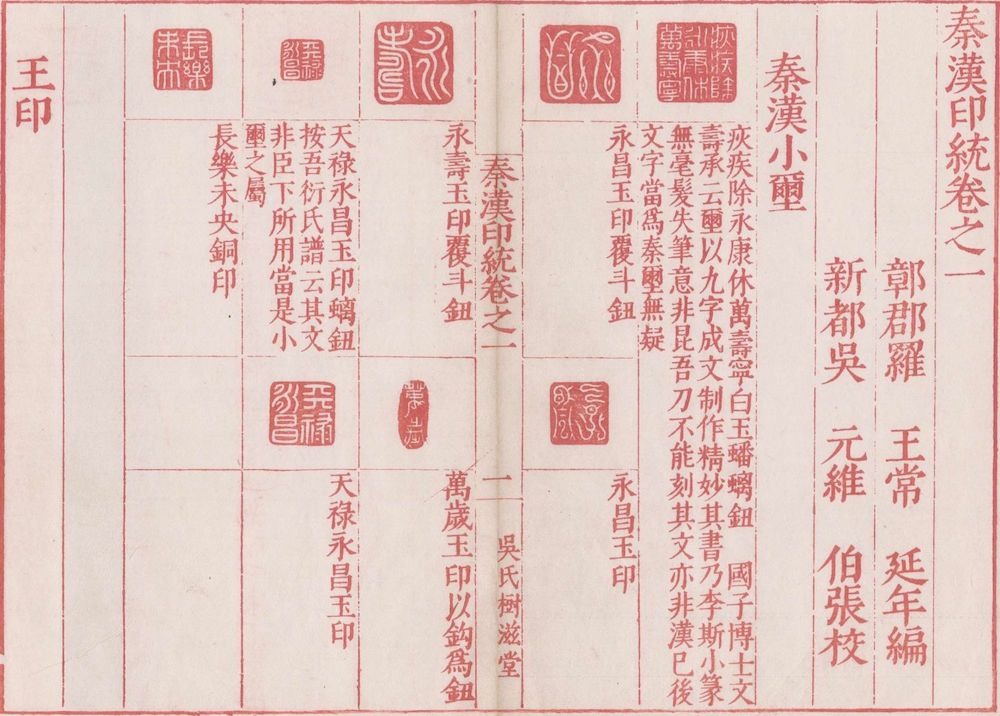The seal album Qin-Han yintong 秦漢印統 goes back to a common project of Gu Congde 顧從德 (1519-1587), who commissioned the seal carver Luo Wangchang 羅王常 (1535-1606), courtesy name Yannian 延年, from Zhangjun 鄣郡 (today part of Changxing 長興, Zhejiang), to reproduce his collection of ancient seals. The result was the catalogue Ji guyin pu 集古印譜, printed in 1572.
Luo – who also called himself Wang Chang 王常 – felt, however, that the book did not show the whole range of early seals, and therefore created a catalogue of his own, including more seals from other collections. This was the catalogue Qin-Han yintong with a length of 8 juan, and printed in 1606. It presents the imprints of metal and jade seals from the Warring States 戰國 (5th cent.-221 BCE) to the Southern and Northern Dynasties period 南北朝 (300~600), both official and private, bearing names and official titles, as well as seals with figures (xiaoxing 肖形).
 |
Small imperial seals (xiaoxi 小璽) inscribed in different styles of small seal script and birds-and-worms script. The annotations give information on the seal handles and quote from earlier catalogues. From Guangming zhi men 光明之門. |
The seals were annotated by Luo Wangchang himself, Wu Yuanwei 吳元維, and Gu Jinheng 顧晉亨. Gong Shanzhang 龔善長 created the reproductions. Some of the prefaces of the Ji guyin pu were adapted for the Qin-Han yintong, namely Huang Jishui's 黃姬水 (1509-1574) preface, and Wang Zhideng's 王稚登 (1535-1612) preface of the revised version of the book, Yinsou 印藪.